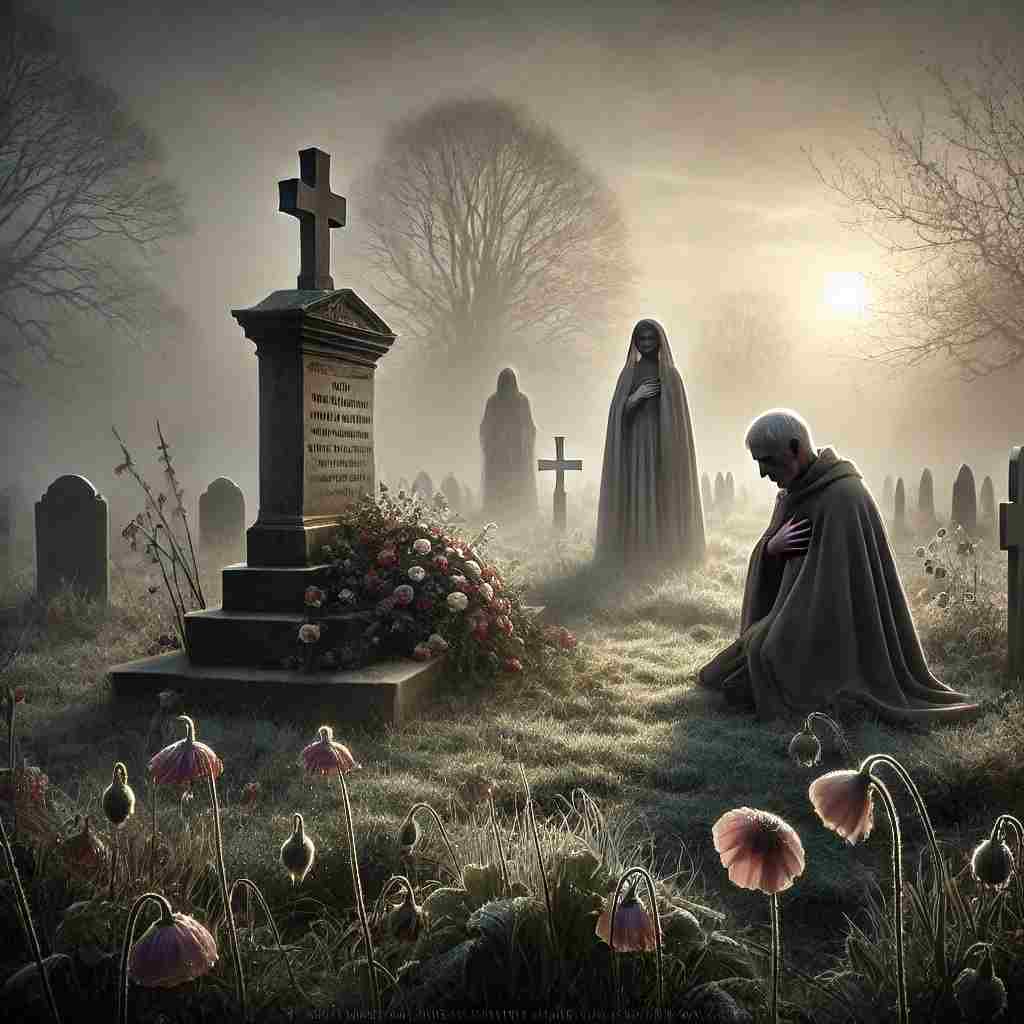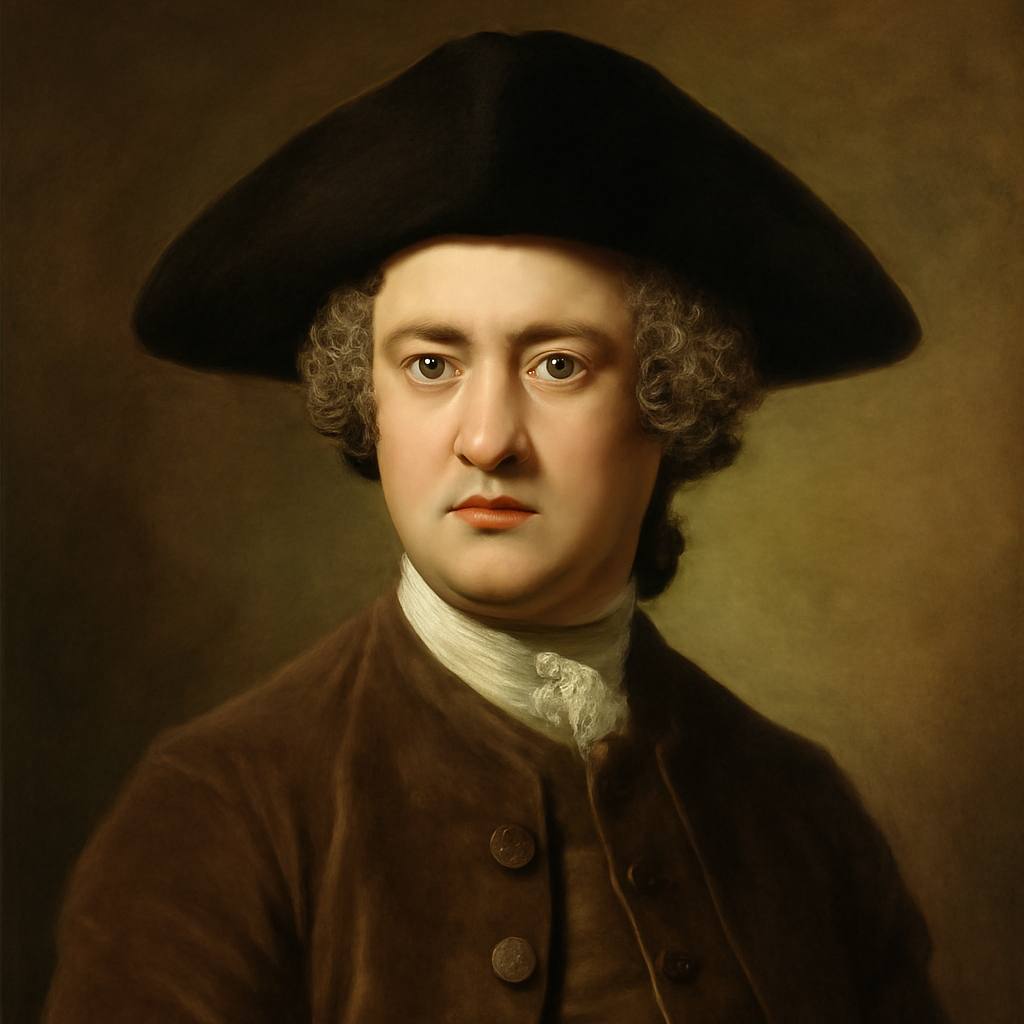Ode Written in the Year 1746
WIlliam Collins
1721 to 1759

How sleep the brave, who sink to rest
By all their country's wishes bless'd!
When Spring, with dewy fingers cold,
Returns to deck their hallow'd mould,
She there shall dress a sweeter sod
Than Fancy's feet have ever trod.
By fairy hands their knell is rung;
By forms unseen their dirge is sung;
There Honour comes, a pilgrim gray,
To bless the turf that wraps their clay;
And Freedom shall a while repair,
To dwell a weeping hermit there.
WIlliam Collins's Ode Written in the Year 1746
Introduction
William Collins's elegiac "Ode Written in the Year 1746" stands as one of the most poignant and politically charged works of the mid-18th century, reflecting both the personal and national grief following the aftermath of the Jacobite Rising of 1745. Through its mere twelve lines, the poem achieves a remarkable fusion of patriotic sentiment and pastoral elegy, while employing sophisticated personification that would later influence the Romantic movement. This analysis will explore the intricate layers of Collins's masterwork, examining its historical context, formal structure, symbolic landscape, and lasting influence on English poetry.
Historical Context and Political Significance
The year 1746 marks a crucial moment in British history, following the Battle of Culloden and the subsequent brutal suppression of the Highland Scots. Collins's poem, while ostensibly honoring fallen British soldiers, carries complex undertones that speak to the broader cultural and political tensions of the period. The poem's opening lines "How sleep the brave, who sink to rest / By all their country's wishes bless'd!" establish a deliberately ambiguous perspective – one might question which "country" Collins refers to, and whose wishes are being invoked.
The timing of the poem's composition cannot be separated from its meaning. Written in the immediate aftermath of one of Britain's most controversial internal conflicts, it serves as both a celebration of sacrifice and a subtle critique of the cost of national unity. The poem's delicate balance between commemoration and lamentation reflects the divided loyalties and complex political landscape of 18th-century Britain.
Form and Structure
Collins employs a sophisticated formal structure that belies the poem's apparent simplicity. The work consists of six rhyming couplets in iambic tetrameter, a form that echoes both the military precision of marching feet and the measured solemnity of funeral processions. The regular AABB rhyme scheme creates a sense of inevitability and closure, appropriate for a poem dealing with death and memorial.
The poet's masterful use of enjambment, particularly evident in lines such as "When Spring, with dewy fingers cold, / Returns to deck their hallow'd mould," creates a flowing movement that mimics the natural processes described in the poem. This technical achievement allows Collins to maintain both ceremonial dignity and organic movement within the same verses.
Symbolism and Personification
Perhaps the most striking feature of Collins's poem is its use of personification, which transforms natural and abstract concepts into active participants in the memorial process. Spring appears as a tender gardener with "dewy fingers cold," creating an image that combines life-giving force with the chill of death. This dual nature of Spring – both regenerative and reminiscent of mortality – encapsulates the poem's central tension between death and renewal.
The progression of personified figures through the poem creates a kind of spiritual procession: Spring, Fancy, Honour, and Freedom each play their role in the ongoing commemoration of the fallen. The description of Honour as "a pilgrim gray" is particularly significant, suggesting both religious devotion and the wearing of time – a figure aged by the weight of responsibility and remembrance.
The Supernatural and the Natural
Collins's integration of supernatural elements with natural imagery creates a unique testimonial space where the ordinary and the extraordinary converge. The lines "By fairy hands their knell is rung; / By forms unseen their dirge is sung" suggest a realm where human grief is elevated to cosmic significance. The supernatural elements – fairies and unseen forms – serve not merely as poetic decoration but as representatives of a larger order that recognizes and honors sacrifice.
The "hallow'd mould" and "sweeter sod" create a sacred landscape where nature itself participates in the act of remembrance. This transformation of the burial ground into a site of ongoing spiritual significance reflects both Christian and pagan traditions, creating a uniquely British pastoral elegy.
Gender and Personification
It is noteworthy that Collins's primary personified figures are feminine: Spring and Freedom are explicitly gendered, while the fairy hands suggest traditionally feminine supernatural beings. This gendering of memorial figures connects to a longer tradition of women as mourners and keepers of memory, while also suggesting a maternal aspect to national grief and remembrance.
The final image of Freedom as "a weeping hermit" presents an interesting gender ambiguity, perhaps suggesting that in the face of such loss, traditional gender roles in mourning become transcended by the universality of grief.
Influence and Literary Legacy
Collins's poem had a profound influence on later Romantic poets, particularly in its treatment of nature as both setting and participant in human emotional and political drama. The work's fusion of patriotic sentiment with personal grief created a template for later war poetry, while its use of personification influenced generations of British poets in their treatment of abstract concepts.
The poem's influence can be traced through Wordsworth's nature poetry, Shelley's political allegories, and even the war poets of the 20th century. Its sophisticated handling of public and private grief created a model for political elegy that remains relevant to contemporary poets dealing with themes of war and national loss.
Conclusion
"Ode Written in the Year 1746" achieves its remarkable power through its fusion of technical mastery, emotional resonance, and political awareness. Collins creates a work that transcends simple patriotic tribute to become a meditation on memory, sacrifice, and the role of poetry in public mourning. The poem's lasting significance lies not only in its historical importance but in its demonstration of how personal grief can be transformed into public memorial without losing its intimate emotional force.
Through careful attention to form, sophisticated use of personification, and subtle handling of political themes, Collins created a work that continues to speak to readers about the cost of conflict and the power of remembrance. The poem stands as both a product of its specific historical moment and a timeless meditation on how societies honor their dead and process collective loss.
This text was generated by AI and is for reference only. Learn more
Want to join the discussion? Reopen or create a unique username to comment. No personal details required!



Comments
No comments yet. Be the first to comment!